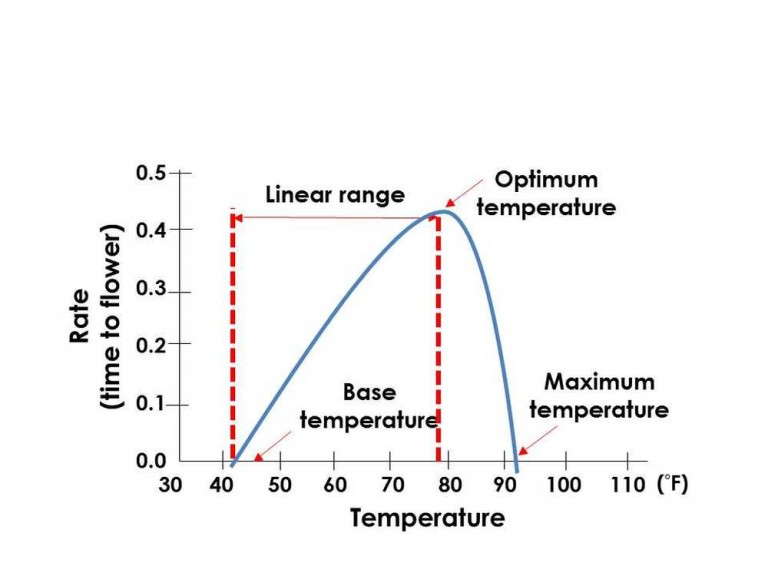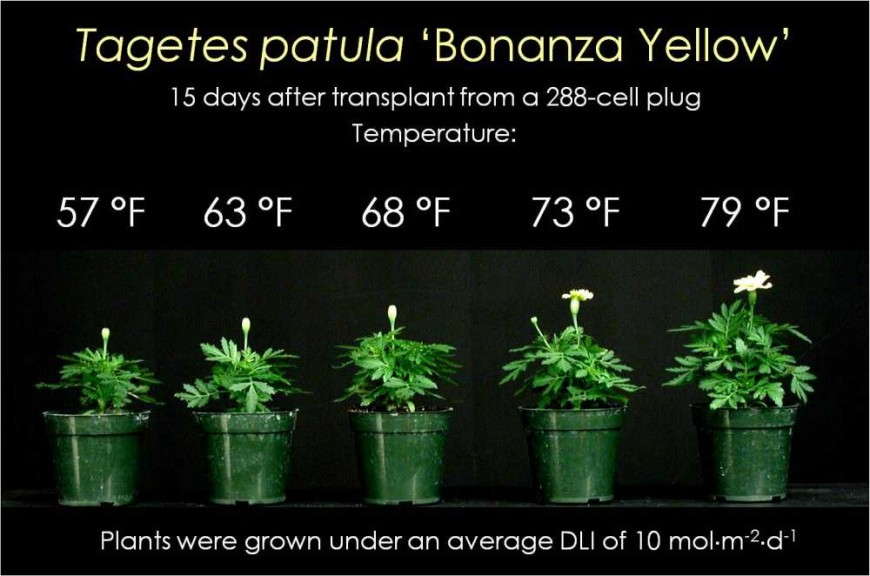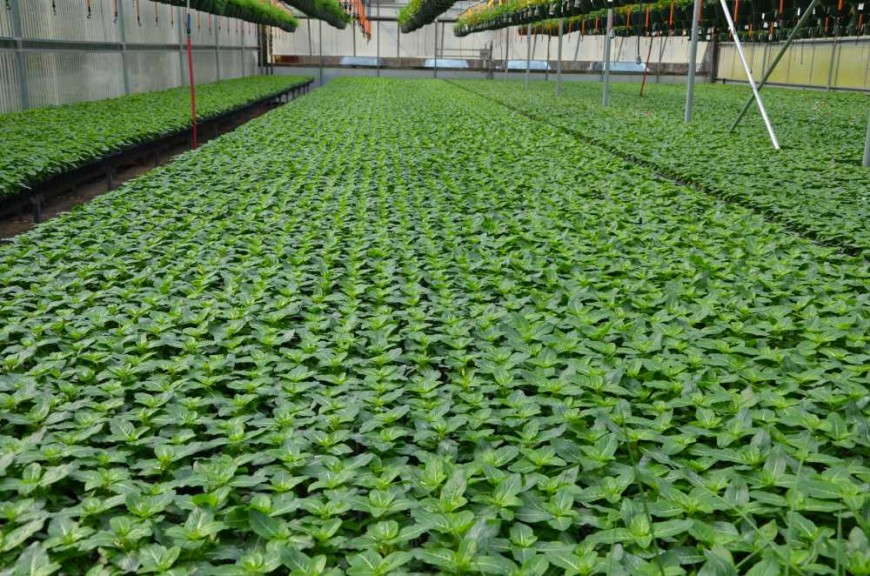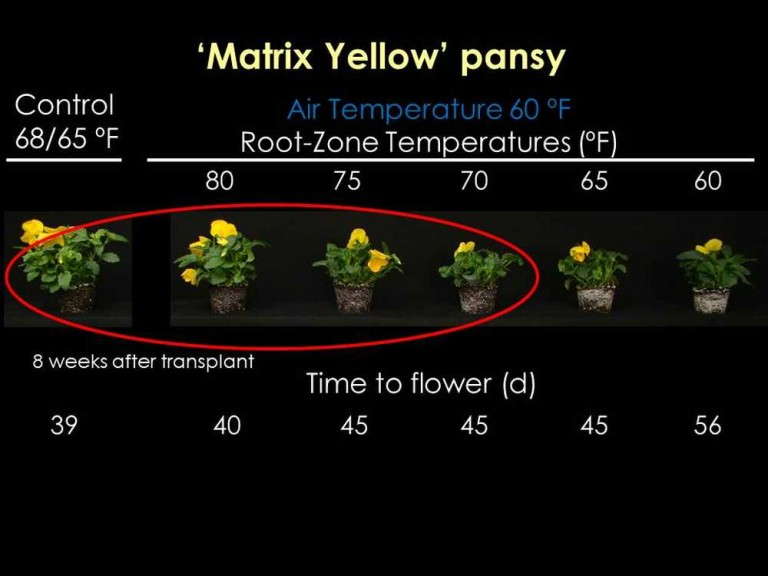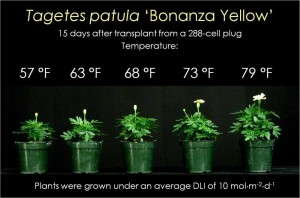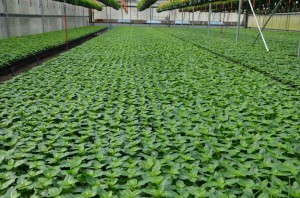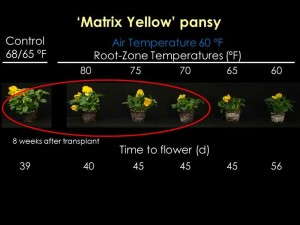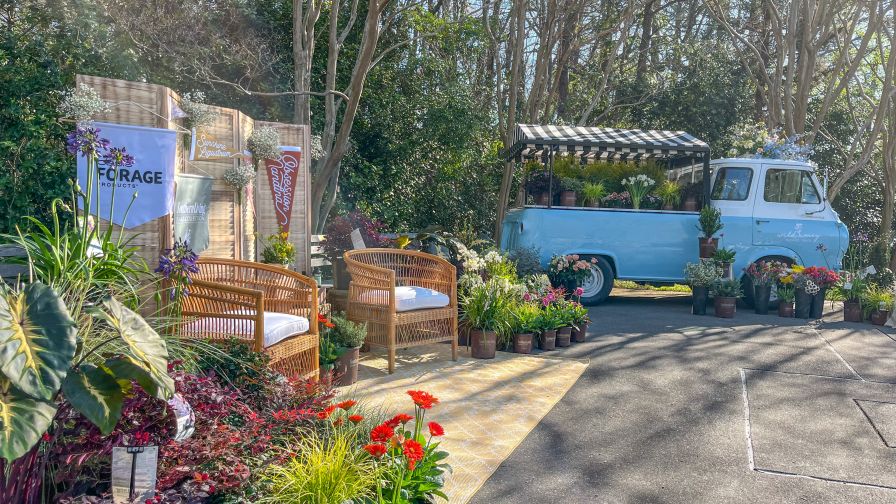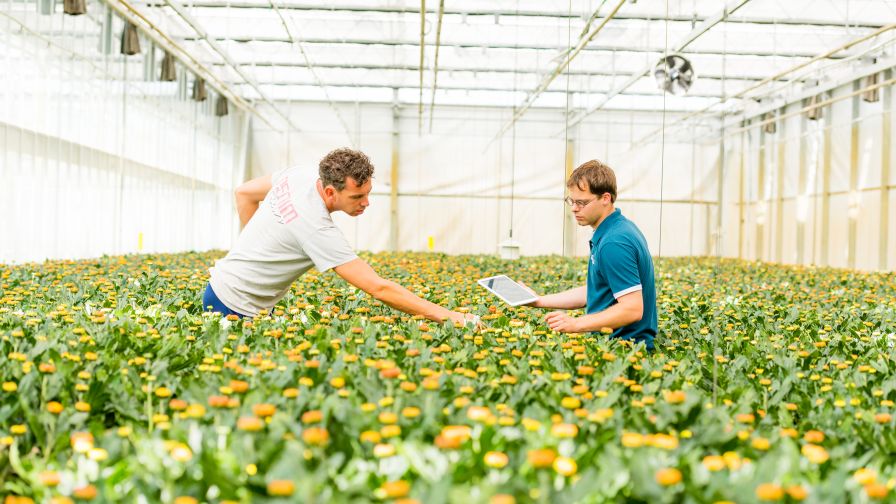How Pine Wood Chips In Substrates Affect Plant Growth Regulators
This is the second article of a four-part series highlighting the production and use of pine wood chips as aggregates in greenhouse substrates.
In the last article (May 2014 issue), we introduced the non-fibrous wood component, pine wood chips (PWC), first manufactured at North Carolina State University in 2010 (Figure 1, see slideshow). Once the processing and construction of PWC were understood, we began investigating this wood substrate component as an alternative aggregate to replace perlite in greenhouse substrates (Figure 2, see slideshow).
In this article and subsequent articles, we will discuss other growth trials conducted with the primary focus on production and grower practices. This article focuses on plant growth regulator (PGR) drench application activity and efficacy when applied to substrates amended with 20 percent PWC aggregates.
[blackoutgallery id=”59331″]
Plant growth regulator drench activity and efficacy can be affected by the amount of PGR solution applied (volume), concentration or active ingredient (a.i.) and substrate component(s). In the past, numerous university studies have reported less PGR drench efficacy on poinsettias and chrysanthemums when substrates were formulated with organic components such as pine bark.
In other studies, similar or greater control of plant growth occurred when PGR drenches were applied to peat- or coconut coir-based substrates and substrates amended with rice hulls. However, to our knowledge there is no information available regarding PGR drench activity and efficacy in peat-based substrates amended with PWC aggregates.
PGR Effects On Perlite- Or PWC-Amended Substrates
At NC State, we investigated peat-based substrates formulated with 10, 20, or 30 percent perlite or PWC aggregates. However, based on conversations with growers to determine the most common substrate formulation, we will present and discuss our findings of the substrates amended with either 20 percent perlite or PWC aggregates (Figure 3, see slideshow). We prepared our peat-based substrates by amending either 20 percent perlite or PWC aggregates (by volume) and adjusted substrate pH to 5.8.
Three plant species were trialed: ‘Pacino Gold’ pot sunflower, ‘Anemone Safari Yellow’ French marigolds and ‘Variegata’ plectranthus (Figure 4A-C, see slideshow). We allowed all plugs to root into the substrates two weeks prior to PGR drench applications.
Drench application rates of paclobutrazol (Piccolo 10XC, Fine Americas) for pot sunflower were 0, 1, 2, 4 mg (a.i); French marigold were 0, 0.25, 0.50, 1.0 mg (a.i); and plectranthus were 0, 0.025, 0.125, 0.5 mg (a.i). For each species, plant height and diameter, days to flower and plant dry mass were determined.
Plant Height And Drench Activity Unaffected By Aggregate Type
For all species in this study, paclobutrazol concentration similarly controlled plant height when applied to either perlite- or PWC-amended substrates; therefore, aggregate type (perlite or PWC) did not affect plant height or drench activity. As expected, when paclobutrazol concentration increased, plant diameter was smaller for potted sunflower (Figure 5, see slideshow) and plectranthus (Figure 6, see slideshow), but French marigold (Figure 7, see slideshow) diameter was not affected.
When paclobutrazol concentration increased, dry mass was less across all PGR drench rates for sunflowers and French marigolds grown in both substrates. However, we observed and quantified differences in plectranthus shoot dry mass between aggregate type and concentrations of paclobutrazol, with smaller plants resulting as concentration increased.
The average number of days to flower was determined for pot sunflowers and results indicate 78 days to flower for the untreated control (0 mg a.i.), while drench applications of 1, 2 and 4 mg a.i. paclobutrazol delayed flowering by two days. This slight delay is a typical result when PGRs are applied to plants.
In a 2013 study, Dr. Brian Whipker recommended 2 to 4 mg a.i. drench applications (when applied with 4 fl. oz./6-inch pot) of paclobutrazol for potted sunflowers. In this study, drench application recommendations were similar for ‘Pacino Gold’ potted sunflowers grown in 20 percent perlite or PWC-amended substrates. There are no recommended drench applications of paclobutrazol for French marigold and plectranthus.
Based on the results of plant growth and shoot dry mass in this study, the recommended drench application of paclobutrazol for French marigolds would be 0.25 to 0.125 mg a.i. and for plectranthus 0.125 to 0.5 mg a.i. paclobutrazol worked when plants were grown in 20 percent perlite- or PWC-amended substrates.
Based on our results, paclobutrazol drench activity or efficacy was unaffected by the inclusion of 20 percent PWC aggregates amended into peat-based substrates. Therefore, to control the plant size of pot sunflower, French marigold and plectranthus, greenhouse growers may utilize similar drench concentrations of paclobutrazol as recommended for perlite-amended substrates and for peat-based substrates amended with 20 percent PWC.
It is also important to remember growth response to PGRs and substrates may vary for different crops, which has to be considered when deciding on a working concentration of a PGR for different substrates.
In these PGR trials, we were pleased to see that even at the 0 application rate, plant size and quality were the same for plants grown in both aggregates. These trials were fertilized with 200 ppm nitrogen and even at higher rates of PWC amendment (30 percent) there were no nitrogen/fertility deficiencies observed in any of the species tested.
One of the main hesitations for using fresh wood components in substrates is the potential for nitrogen tie-up. The next article in this series will address this issue in detail.
During all PGR trials, and replication of these trials, the similarities in substrate physical properties (air and water) between PWC and perlite were also similar, meaning that PGR drench applications and general irrigations were the same for all plants in both substrates. Other observations from these trials support previous trials from 2010 through 2012 that no substrate shrinkage occurred with PWC mixes and even during the longest trial (sunflowers) the PWC aggregates did not even change color during the production period. These trials provide additional evidence of the feasibility of replacing perlite with PWC with no change in production or growth performance of greenhouse crops.
Reference
Whipker, B.E. 2013. Plant growth regulator guide. GrowerTalks. Ball Publishing, West Chicago, Ill.






